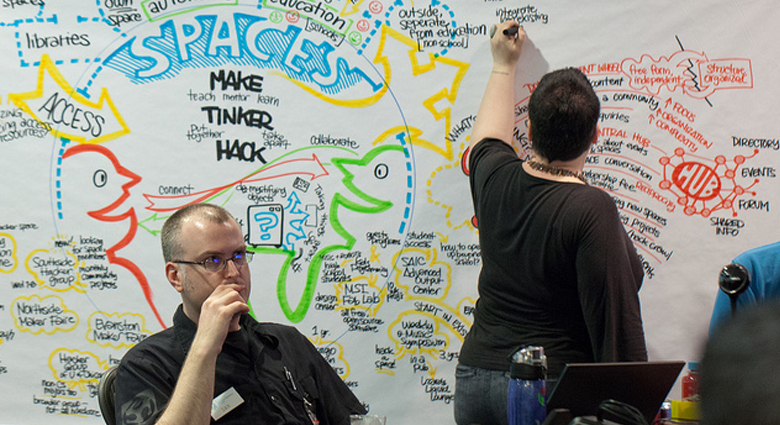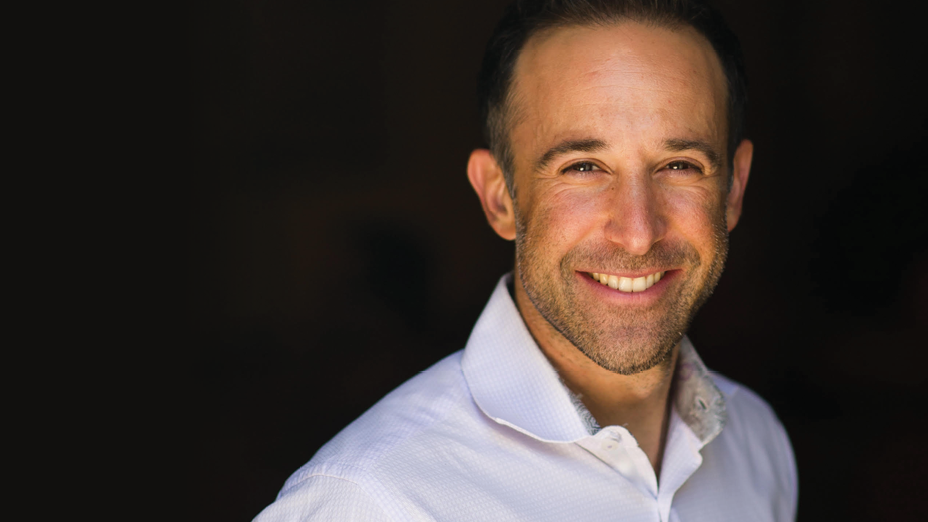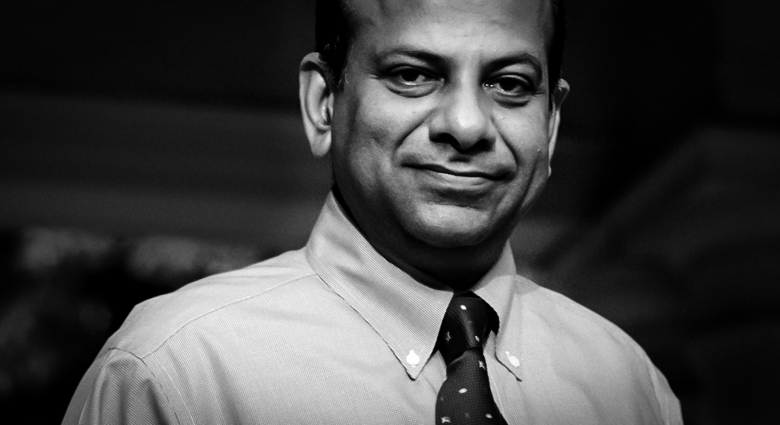In articles in both the New York Times and The New Yorker earlier this year, the concept of brainstorming as introduced in the 1940's by Alex Osborn has been attacked as ineffective and linked to the concept of "Groupthink."
In her NYT piece and in an HBR ideacast, Susan Cain points out that the popular view — "Lone geniuses are out. Collaboration is in." — conflicts with research that suggests "people are more creative when they enjoy privacy and freedom from interruption." Some of the most spectacularly creative people in many fields are often introverts who are more comfortable working alone. And in his New Yorker article, Jonah Lehrer cites research indicating, "Brainstorming didn't unleash the potential of the group, but rather made each individual less creative."
"If everyone has to agree, the outcome will be the worst possible aspect of Groupthink."
We have no issue with the importance of the creative individual to generate focused and powerful ideas. Furthermore, we agree that, used improperly, Osborn's process of brainstorming can promote consensus, not collaboration. Suffice it to say, we dislike consensus-based "Groupthink" as much as the next person. Rather, our issue is with the way both articles have attacked Alex Osborn's concept of brainstorming as a powerful collaborative thinking tool. We are strong advocates of collaboration in innovation, and believe that the proper use of brainstorming techniques is a powerful tool in the collaborative approach. Over our many years of experience, we have seen managers effectively use three simple techniques for avoiding "Groupthink" during brainstorming. Here's our advice:
1. Assemble a Diverse Team
Build your team with people from different disciplines, cultures and age groups Be sure that some members have necessary and relevant expertise, but that some are naïve about the issue (we call them "WildCards"). We once ran a session for a client team composed of a range of scientists and technologists from Bell Labs where 25 new patent applications were filed — 20 of which came from the participation of a 70 year-old grandmother!
And when you are considering candidates, include different styles of participation and thinking: Explorers (extroverted, inquisitive, comfortable with ambiguity, free-thinking), Developers (creative problem-solvers, sometimes introverted, quieter, but love being given a problem or challenge to solve), and Commercializers (realists, business-minded, practical problem-solvers).
Encourage each type of thinker to play, bring introverts out of their shells and tone down the influence of the extroverts, and leverage their diversity to not only identify a range of possibilities, but to also find ways to make the newer ideas feasible.
2. Focus on Roles: The Client, the Facilitator, and Resources
Somebody has to own the effort. This is the client role. That individual may have a lieutenant, but clientship cannot rest with the full team or even a large subset. That is a sure way to generate "Groupthink." Instead, one person must make the decisions. The team should advise that person and advocate for their positions with passion, but ultimately, the client has to exercise leadership and decision-making — they must pick the final concepts to recommend or implement. This role cannot be delegated.
The client should not be in charge of running the meeting/dialogue. They must keep their heads in the content and not worry about or unduly influence the process. Rather someone else should be in the facilitator role and in charge of the process — facilitating the interaction, drawing out the range of perspectives, managing the brainstorming process non-judgmentally.
Everyone else is in the resource role. They focus on listening, learning, ideating, building on other offers, etc. Resources advocate, but do not decide! If everyone in the room has to agree, then the outcome will be the worst possible aspect of "Groupthink" — a decision in favor of the lowest common denominator, devoid of originality, risk or newness, and only what everyone can envision and agree to.
3. Encourage Passionate Champions
"Collaborative innovation involves the genius of the "and" vs the tyranny of the "or"."
Many people understand and follow the first two rules of brainstorming well. But if they miss this next technique, they miss the real power of collaborative thinking: The power of one. Seems like an oxymoron, doesn't it? It's not. Collaboration helps individuals improve their own thinking and gives them ideas they may not have thought of by themselves. When this happens, brainstorming results in the best of both worlds.
This is where the Passionate Champion plays a key role. In our work, after the brainstorming process, we often open the session up to "Individual Champions." Anyone, alone or with other people if they need or want help, can pick any idea and develop it further. Even if the idea has already been developed in one direction, a Passionate Champion may see it very differently and develop it in a totally different manner. Or, they can pick an idea that was not advocated by the group or selected by the client, and develop it as they see fit.
In our work, we find that Passionate Champion ideas often account for 50% of those that make it through internal and external vetting, and 20-30% of the ideas that make it into final concepts. What's more, they are often the most breakthrough in terms of truly new, game-changing concepts.
Collaborative innovation involves the genius of the "and" versus the tyranny of the "or." It's not that brainstorming must always turn into "Groupthink" or that introverts or individuals have the best ideas. In good brainstorming, one feeds off the other and the end result is significantly more powerful than either approach alone.





.png)

%20(1).png)


What Did You Think?